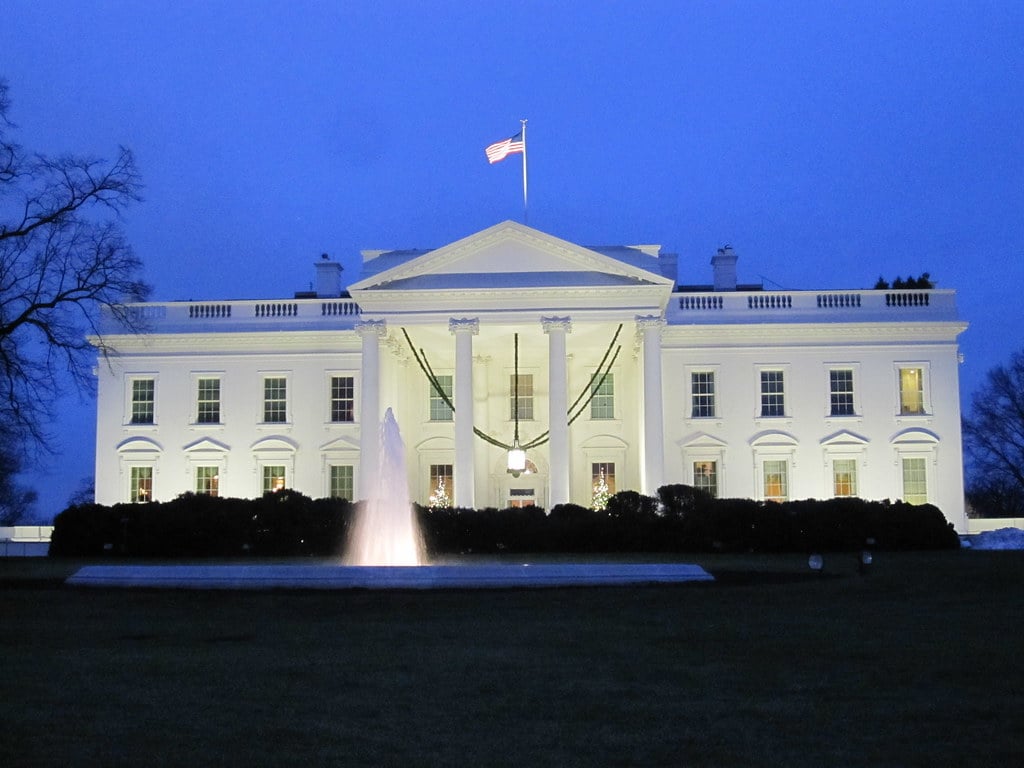Key takeaways:
- The White House ballroom will expand 25,000 square feet and seat 900 guests.
- Trump and donors finance the $200 million renovation, the largest since Truman.
- Major firms like Google, Lockheed Martin, Palantir and Blackstone have pledged funds.
- Donors giving $5 million or more could see their names etched inside.
- No final decision yet on name displays; a website is another option.
Inside the White House Ballroom Project
President Trump plans a major upgrade to the East Wing. This new White House ballroom will cover about 25,000 square feet. It can host up to 900 guests at once. As a result, the total project will span 90,000 square feet. The effort marks the largest White House renovation since President Truman’s era. Moreover, it will add modern facilities under the first family’s roof.
How the White House Ballroom Expansion Came to Be
Renovations began with a private planning group. They sought updates to old wiring and plumbing first. Then they pitched adding a grand ballroom. The plan won approval from federal preservation experts. Meanwhile, architects drew up designs to fit the East Wing’s style. They aimed to keep historic charm while adding modern comfort. Eventually, President Trump announced he would cover the total cost. The project now awaits final federal review.
Who’s Paying for the White House Ballroom
Trump confirmed that he will pay for the ballroom. However, he also welcomed private donations. In fact, multiple firms have already pledged at least $5 million. Among them are Google, a leading tech company. Lockheed Martin, a top defense contractor, also joined in. Palantir, known for data analytics, pledged millions too. Blackstone’s CEO Stephen Schwarzman chipped in as well. Therefore, more money will flow in through wealthy donors. All of it stays outside the federal budget.
What Donors Get in Return
In exchange for funds, donors could get a special perk. CBS News reports elites may have their names etched inside. They would appear on plaques in the new ballroom. Furthermore, project planners might list donor names on a website. This online wall of fame could stand for years. Yet, no final decision exists on how names appear. Trump’s team is still reviewing options. Either way, the donor incentive shows the project relies on private funding.
Why Donor Recognition Matters
Donor recognition plays a key role in fundraising. People give more when they gain lasting recognition. In this case, seeing a name in the White House itself feels historic. As a result, more donors might step forward. Likewise, listing on a website offers digital visibility. That could appeal to younger donors focused on online presence. Either method could raise the needed $200 million quickly.
What Happens Next
Project managers will soon finalize the name display plan. Then they will update preservation boards and secure permits. Construction crews will start work on basic infrastructure first. After that, they will frame the ballroom’s walls and ceiling. In parallel, interior designers will choose fabrics, lighting and flooring. They plan to blend classic White House elegance with modern flair. If all goes well, the ballroom could open by late next year. Meanwhile, donor recruitment continues to fill funding gaps.
Potential Impact on White House Events
The new White House ballroom could change event hosting. With space for 900 guests, state dinners could grow larger. In addition, the first family could host bigger galas and fundraisers. As a result, the White House might attract new cultural events. Also, meetings with global leaders could take place in this grand hall. However, some critics worry about cost and private influence. They fear donors might gain undue access or favor. On the other hand, supporters say private funding spares taxpayer dollars.
Balancing History with Modern Needs
Renovating a historic building poses special challenges. Architects must respect the White House’s heritage. Yet, they also need modern systems for safety and comfort. For instance, they must hide new wiring so it does not show. Moreover, they need efficient heating and cooling systems. Designers plan custom panels that mimic old styles. At the same time, they will install energy-saving lighting. This balance aims to preserve history and serve current needs.
Addressing Criticism and Transparency
Critics question donor influence inside the White House. They warn naming rights could erode trust in federal decisions. In response, the administration promises a clear donor process. It plans to publish a list of major contributors. Furthermore, it will cap the number of names displayed. Transparency measures aim to show that donors gain no policy favors. Instead, they simply support a historical building’s upkeep.
Conclusion
The new White House ballroom stands as a landmark renovation. Funded by Trump and private donors, it will blend history and modern design. In exchange, donors may gain lasting recognition inside or online. While the project moves forward, transparency promises aim to calm critics. Ultimately, this donor-funded model could reshape how historic sites get updated.
Frequently Asked Questions
What exactly is the White House ballroom project?
The project expands the East Wing by 90,000 square feet, adding a 25,000-square-foot ballroom. It aims to update the space with modern facilities while preserving historical style.
Who is funding the White House ballroom renovation?
Private donors and President Trump are covering the $200 million cost. Major contributors include Google, Lockheed Martin, Palantir and Blackstone’s CEO Stephen Schwarzman.
Will donors see their names inside the White House ballroom?
Possibly. Plans include etching names on plaques or listing donors on a website. The final display method remains under review by Trump’s team.
When could the new White House ballroom open?
If approvals and construction go smoothly, the ballroom could open by late next year. The timeline depends on permitting, design choices and funding completion.

